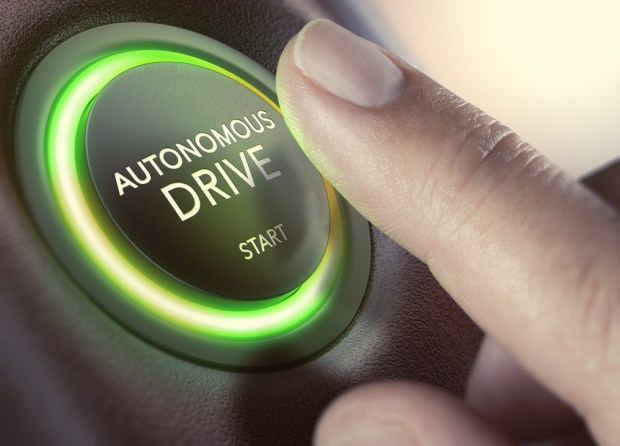Arizona Autonomous Vehicle Tests Build On World’s Fair Legacy

Moonshot ideas don’t go from a dream to a business overnight: Take self-driving cars, a concept that took decades to come to commercial fruition. General Motors showcased the concept at the 1939 World’s Fair years before Waymo started driving autonomous vehicles through the streets of the Phoenix suburbs. While modern-day self-driving cars use sensors, the World’s Fair concept was to use electromagnetic fields created by metal spikes guiding an electric vehicle.
The designer of General Motors’ 1939 World’s Fair pavilion, Norman Bel Geddes, had big dreams for the potential of automobiles long before modern expressways dotted the American landscape. In 1940, he wrote in a book entitled “Magic Motorways” that, in a matter of decades, cars would become rather advanced: “These cars of 1960 and the highways on which they drive will have in them devices which will correct the faults of human beings as drivers. They will prevent the driver from committing errors.”
A few years later, General Motors created the Firebird II concept car that had a self-driving system powered by an electronic strip on the road surface underneath the vehicle. The car was a bit different than modern self-driving vehicles, as it was powered by a gas turbine and was made of titanium. And, without the need to concentrate on the road, passengers would be free to enjoy a juice dispenser in the car (per a promotional video at the time). “This was the beginning of autonomous driving,” celebrity and car enthusiast Jay Leno told CNBC in an article about the Firebird II.
Self-Driving Rideshares
Fast forward a few decades, and Waymo has built on the legacy of those early self-driving concepts by creating a ridesharing business model with self-driving vehicles. This week, the company unveiled a service dubbed Waymo One that appears to have a few similarities to Uber and Lyft. For starters, passengers can hail Waymo’s cars through a mobile app, and that app also provides riders with fare estimates before they hitch their rides calculated on time and distance, among other factors. (Reuters recently took a ride in a Waymo One vehicle that lasted for three miles and came at a cost just shy of $8, which the outlet noted was slightly higher than a Lyft fare.)
The cars are not completely autonomous, however, as they still have a Waymo engineer at the wheel in the event of a problem. And not everyone in Arizona can hitch a ride with the vehicle: Waymo said in a Medium post that it was opening up to “early riders from our research program” before it slowly rolls it out to other riders, with safety as a factor in the speed of the launch. The Los Angeles Times reported that Waymo Chief Executive John Krafcik said “self-driving technology is new to many, so we’re proceeding carefully with the comfort and convenience of our riders in mind.”
The paper also noted that Arizona is a location conducive for the testing of self-driving cars. For starters, the state’s rules for driverless cars aren’t as strict as California’s. At the same time, the Phoenix area has a desert landscape, as well as “well-kept and well-marked roads” but no snow (save that for Flagstaff.) There also aren’t many trees that can obstruct street signs, and the “sun-blasted sidewalks” don’t have many people walking on them. And it’s an environment that hasn’t gone unnoticed by other self-driving vehicle operators.
Autonomous Deliveries
Kroger teamed up with self-driving car startup Nuro to use an autonomous vehicle to make deliveries in the Phoenix suburb of Scottsdale. The move comes a few months after the two firms announced they would be working together to roll out same-day delivery. A Fry’s Food and Drug grocery store was to be the focus of the Scottsdale test, according to reports in August. Like Waymo’s service, customers would use an app to interact with the offering. And while customers reportedly didn’t have to place a minimum order, they did need to pay a flat fee for delivery.
Nuro CEO Dave Ferguson said in a statement at the time that the aim of the effort was to provide convenience along with safe operation of the vehicles. “We’re proud to contribute and turn our vision for local commerce into a real, accessible service that residents of Scottsdale can use immediately. Our goal is to save people time, while operating safely and learning how we can further improve the experience.” While the service is geared toward grocery, potential delivery targets were also said to include an item left at a friend’s house or dry cleaning, among other things.
While there may not be a self-driving vehicle on every corner, the latest trials and tribulations of Waymo and Nuro suggest that self-driving cars are no longer a far-off dream in a World’s Fair exhibit: They are now working their way onto America’s streets for ridesharing and last-mile deliveries, with Arizona as one of its earliest testing grounds.
